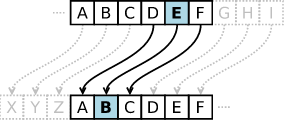I’m a bit behind the times, but this post from Programming Praxis intrigued me enough that I kept it in my todo list for rather a while. So let’s get around to it.
I’ll just copy the description straight from the Programming Praxis website (although there are at least two previous version:[1][2]):
There is a monkey which can walk around on a planar grid. The monkey can move one space at a time left, right, up or down. That is, from (x, y) the monkey can go to (x+1, y), (x-1, y), (x, y+1), and (x, y-1). Points where the sum of the digits of the absolute value of the x coordinate plus the sum of the digits of the absolute value of the y coordinate are lesser than or equal to 19 are accessible to the monkey. For example, the point (59, 79) is inaccessible because 5 + 9 + 7 + 9 = 30, which is greater than 19. Another example: the point (-5, -7) is accessible because abs(-5) + abs(-7) = 5 + 7 = 12, which is less than 19. How many points can the monkey access if it starts at (0, 0), including (0, 0) itself?
read more...
